2020 | Generation
No Time for Ordinary Cinema
A world that cries out for change: In the 43rd year of the Generation section, the young protagonists set the tone, face challenges and dare to take big leaps. A conversation with Section Head Maryanne Redpath about the current overdose of extraordinary situations all across the globe and the appeal of cinema for film enthusiasts of all ages.
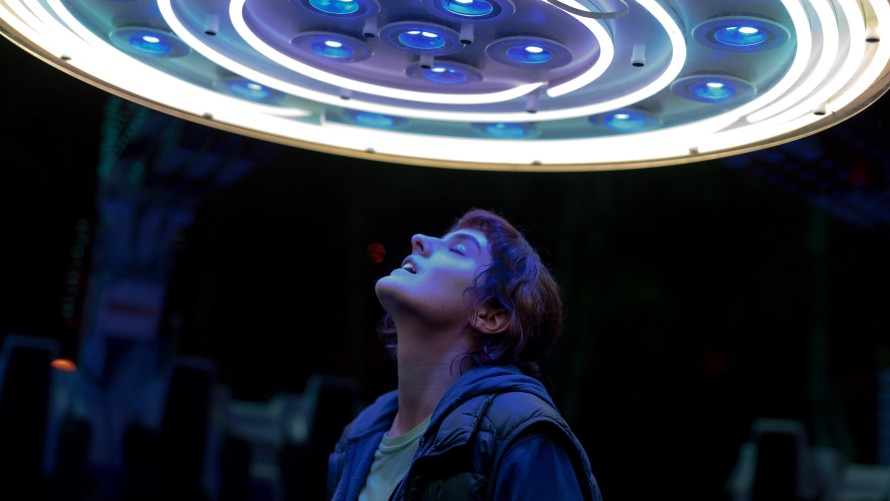
Noémie Merlant in Jumbo by Zoé Wittock
Mariette Rissenbeek, the Executive Director of the Berlinale, recently highlighted the significance of the Generation programme, noting in particular the challenges and rewards of getting young people excited about cinema. What makes the section so special in this regard?
The profile and the programme of Generation provide the answer to this question. For all other sections, by means of comparison, the films of this festival are accessible only to those who are 18 years of age or older. In this respect, the question automatically arises as to what happens with people under the age of 18. In my experience, young people like adults, need access to qualitative international cinema. Generation offers them this opportunity and the excitement is palpable, year for year. Good cinema is good cinema, plain and simple. For young cineastes, and for everyone else.
There are some classic motifs in this year's programme, for example, the great coming-of-age stories.
Yes, of course, coming-of-age stories are very much at home with Generation. In the course of a lifetime, there are so many small steps and big leaps to be made. As a child, notably, the height of fall can be huge. There is great potential for drama here, which is something the Generation filmmakers understand. No matter what aspect of life you examine – be it the cultural or political environment or the family or notions pertaining to your own body and sexuality – the scope of all of these coming of age indicators is immense for young people. For example, when you unhappily fall in and out of love for the first time, the suffering is enormous, downright gigantic. If you are an adult, on the other hand, you perhaps become more and more accustomed to life’s ups and downs. As a teenager, though, it can literally eat you up, as in Jumbo by Zoé Wittock. The film illustrates how the first great and highly unusual love-story experienced by a young woman, played by Noémie Merlant, puts the strong mother-daughter relationship to the test. The daughter's decision to let her emotions run free confronts the mother – whose character is drawn as a liberal, open-minded woman – with unforeseen emotional challenges.
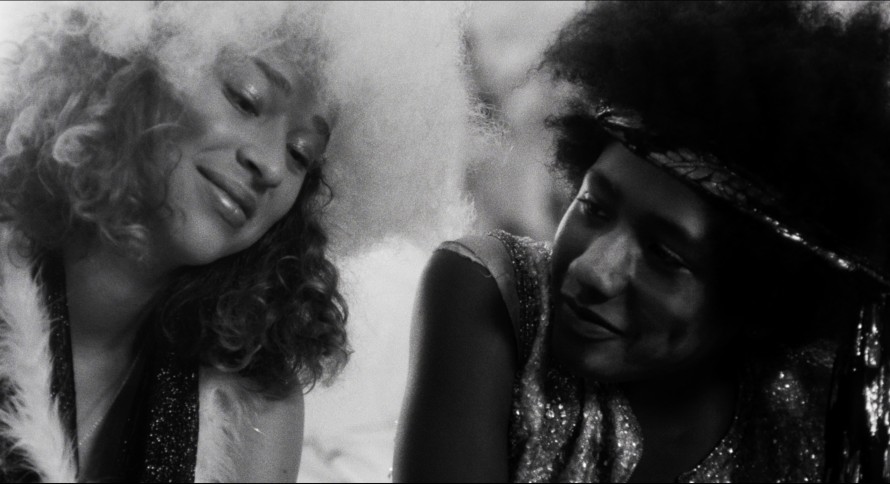
Lana Rockwell and Jabari Watkins in Sweet Thing by Alexandre Rockwell
You've already mentioned the emotional intensity of the cinematic material. To what extent is it integral to the Generation programme?
Many people still assume that a film must be light fare for children. However, this cliché often means that children are viewed without being seen. For me, it is the perspective that counts, meaning through whose eyes is a story being told, as well as who is watching a particular film. As adults, we should respect and recognise young people and listen to how they relate their experiences, which can be very intensive and existential. Films screened in the Generation programme navigate the space between story and audience, for example, with Alexandre Rockwell's Sweet Thing. Rockwell artistically manages to transform his film, which initially comes across as a tough social drama, into an almost fairytale-like, emancipating road movie. The children flee from their precarious and dysfunctional family relationships and invent a childhood in accordance with their own ideas, full of imagination and with a portion of carelessness, but also characterised by loving care for one another.
You talk about heroines and heroes in the Generation programme. Today, however, many young people are no longer looking for their role models in the cinema, but in social media. Influencers are the new idols. What can the film community do to counter this?
I beg to disagree. Year after year, I notice the desire among young people to go to the cinema and watch films together with others. Making this social experience possible, this exchange, also with the filmmakers during the conversations and the encounters following the films, is very central to Generation. One should not underestimate the influence cinema can have, the power to create a shared moment and unforgettable experiences, the power to change lives. There is a tremendous potential in this, which is readily perceived by young people. The 70,000 viewers who watch the Generation films every year are evidence of this.
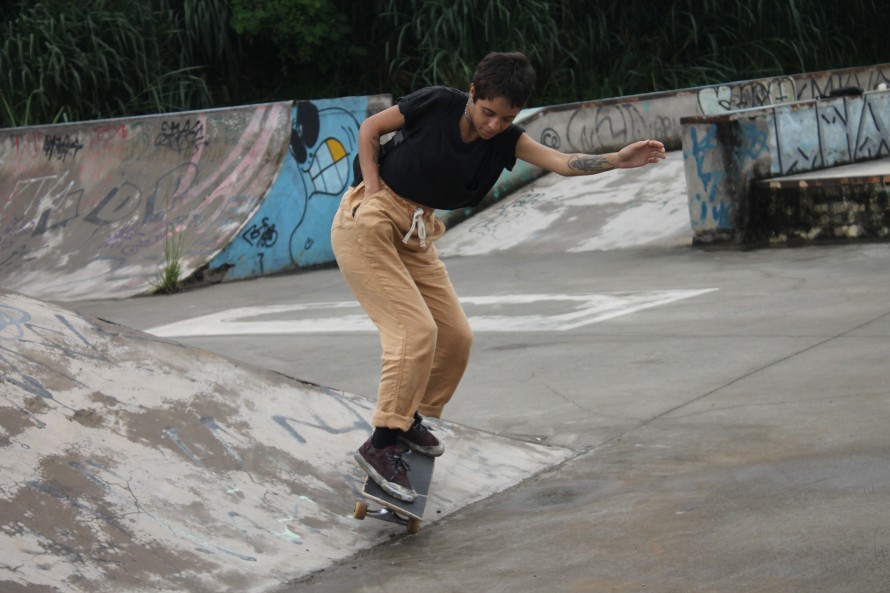
Grace Orsato in Meu nome é Bagdá by Caru Alves de Souza
Does one of the heroic characters of this year's programme stand out for you?
There are so many. But, for example, Bagdá in Meu nome é Bagdá (My Name is Baghdad) by Caru Alves de Souza from Brazil, a film which is set in the skating milieu of São Paolo. In her family and in the neighbourhood at large, Bagdá is surrounded by very great women who give her a feeling of freedom and self-determination. However, in her clique at the skater park, she is mainly surrounded by guys who try to exercise a certain machismo. And she bravely defends herself against it. One of the boys accosts Bagdà, whereupon she and the other skaters confront him in front of everyone else and do not excuse his behaviour. A film in which no means no.
This demonstration of courage is representative of many other films in the programme in which a female protagonist asserts herself. In Maïmouna Doucourés Mignonnes (Cuties), young Amy is in constant conflict. At home, she is engulfed in the traditional expectations of her Senegalese family. On the other hand, she longs to be like her French schoolmates, girls who are incredibly self-confident in claiming the right to self-determination and in discovering and displaying their nascent sexuality, according to the codes of media and advertising. Amy has to navigate between these worlds. And in the end, the film resolves the conflict wonderfully, with a liberating leap into the air. But of course, you have to see that in the cinema yourself.
Las niñas (Schoolgirls), Pilar Palomero's debut film, tells of twelve-year-old Celia, who attends a Catholic girls' school in Spain during the 1990s. Together with her best friend, Celia undermines the prevailing conservative value system, step by step. The two create their own space to discover themselves. This age is particularly interesting. For girls, it's the time of the first menstruation, you get breasts, your whole body changes. It's a tender age. You're still a child, but you're already someone else. It's like standing on a bridge.
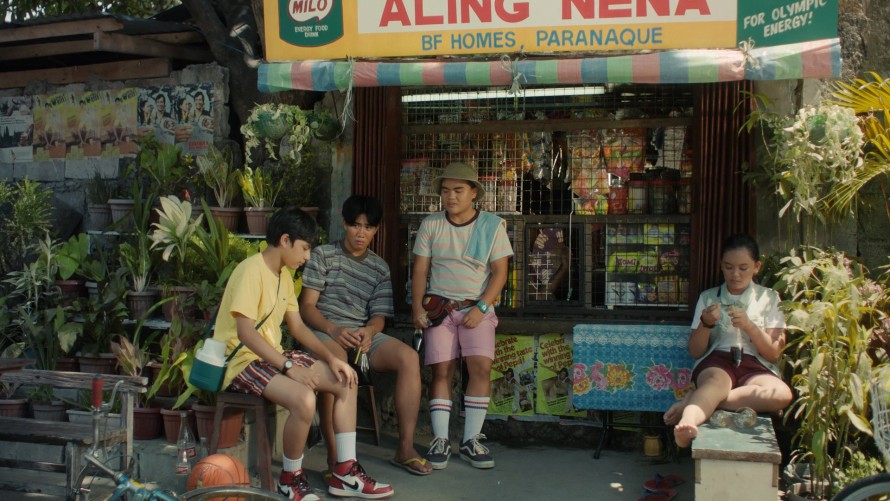
Noel Comia Jr, John Vincent Servilla, Jiggerfelip Sementilla and Kim Chloie Oquendo in Death of Nintendo by Raya Martin
Of course, it similarly applies to boys.
Absolutely. Boys go through this phase of being on the bridge as well. That's universal and dictated by all sorts of things. In Death of Nintendo by Raya Martin, also set in the 1990s, you can experience this with three boys in the Philippines. They want to grow up and take a trip to a shaman in order to become circumcised, a traditional ritual of becoming a man for their culture. The coming of age story is told with such ease, which makes it fun to accompany the friends on their journey.
And there is also a very sensitive, Argentinian short film, El nombre del hijo (The Name of the Son) by Martina Matzkin. The main character, 12-year-old Lucho, is a trans boy. At the end of the film, he stands alone on the beach and stares lost in the waves. The worst is feared. Then, however, his father comes up to him. Without giving too much away, this is a very touching and tender scene that lingers for a long time.
In the Generation programme, young souls are often faced with major problems and challenges. What is so important for you about the immense tension this creates?
In almost every film, I see children and young people who are incredibly resilient. Often because they have no other choice. Indeed, at times, they have to be more adult than the adults in their lives and they have to take on responsibilities, some of which, in my view, no child should have to do. Furthermore, the films create worlds and stories in which young people find the strength to assert themselves, make a stand and set an example. We witness young people who rebel, who protest, who move in a world full of multiple states of emergency. There is a basic, primeval pleasure in life. Children and young people feel this very strongly, they have a whole future ahead of them. This desire to live life feeds many of the stories we show. Haru, the protagonist from the Japanese film Kaze no Denwa (Voices in the Wind), encounters her tragic fate, the loss of her family through the 2011 tsunami, with incredible emotional intensity. Serena Motola portrays this young, grieving woman searching for closure, with a physical presence that will by no means leave the audience unmoved.
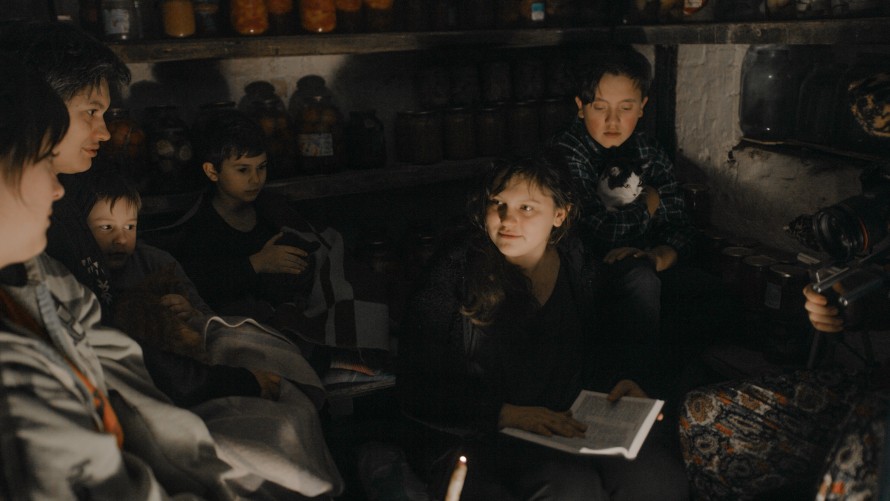
The Earth Is Blue as an Orange by Iryna Tsilyk
Although it's not always clear at the end of the films whether the big challenges can be mastered...
Many of the films do have an open end, their protagonists are faced with the question: Should I stay or should I go? And with that, the question is passed on to the viewers: How would you decide if, for example, your family is persecuted and killed because of their culture, their origins?
Maintaining the balance between challenging and overwhelming young audiences is always a fine line for us as program makers, which we take very seriously.
For example, at the beginning of Atiq Rahimi's Notre-Dame du Nil (Our Lady of the Nile), Hutu and Tutsi co-exist in a noble Rwandan girls' boarding school. The growing tensions in the society at large are increasingly experienced within their cloistered, orderly world and there is a dramatic foreshadowing of what will later escalate into a devastating genocide. Some of the films simply cannot promise a happy ending because the realities of their protagonists are just as bleak as the films depict them. In Perro, a boy has to leave his home because the planned construction of the El Gran Canal forces the Indigenous community of Bangkukuk in Nicaragua to relocate. The family in The Earth is Blue as an Orange lives in the middle of the Ukrainian war zone. They tell stories and make films to process their experiences of war. It is about overcoming inner and outer limits and defying the everyday challenges, using poetry and the imagination. Such films, of course, motivate the audience to imagine what could happen next.
You make the age recommendations for the films in the Generation programme. What does this process look like?
The recommendations are always upwardly open, which is unusual in the festival world. Normally, it is said that a film is suitable for children from six to eight years, for example. We simply designate a lower age limit and thus invite a wide range of viewers into the films. I believe there are differences in perception and life experience between peers within the same age group. Thereby, we are aware that we have a great responsibility. We discuss each individual age recommendation intensively as a team. Ultimately, I take responsibility for it.
How do the filmmakers respond?
Mostly the filmmakers are overjoyed by the invitation. Some are surprised that their film could be considered to be a “children's film”. In particular, Kplus is still regarded by some as a “kids thing”. However, many of the films in this competition are not made primarily or exclusively for young audiences, so we understand the response because “children’s film” can come with all sorts of expectations. Generally, we try to avoid any type of misleading labelling. Kplus stands for convention-breaking, international state-of-the-art-cinema. I convey this to the filmmakers, and they enjoy the experience of incomparable projections at the festival and the discovery of the diverse and dynamic, young-at-heart, cineaste, Generation audiences.
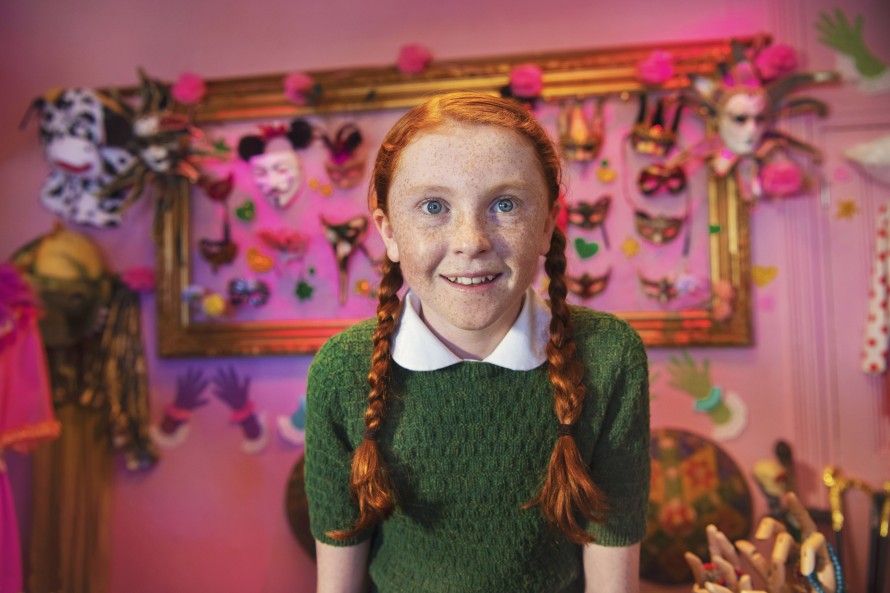
Daisy Axon in H Is for Happiness by John Sheedy
We've already spoken about the many problems and challenges of the young protagonists. But where did you actually have the opportunity to laugh during the selection screenings?
Actually, there are some very entertaining, amusing films in our programme. Films that deal with serious issues while exhibiting a certain light-heartedness. In the Danish animation Mugge & vejfesten (Monty and the Street Party) by Anders Morgenthaler and Mikael Wulff, a boy wants to organise a big neighbourhood party to reconcile his disputed parents. The film is not particularly politically correct, there are nuns with beards on stilts and nudists who do parkour. Captivatingly, the film whisks you up into a colourful world full of absurd situations and wonderful punch lines.
The Brazilian film Alice Júnior by Gil Baroni also appears extremely light and humorous, despite the potential for conflict. Alice Júnior is a trans girl who goes her own way, and she does so in such an enticingly confident and cheeky manner. She herself copes fabulously with it, she is not a tortured character. It's the others who have a problem but Alice quickly teaches them how to get along with her. This is told in such a positive tone, which one unfortunately finds too rarely on the subject.
There is also plenty of opportunity to smile with the Australian film H is for Happiness by John Sheedy. The main character is Candice Phee: red hair, freckles, actually a modern Pippi Longstocking. Her parents are about to break up, and Candice has to deal with it and try to somehow stay happy. The film, like its heroine, is sassy and smart. At the same time, it has a great depth. A rousing opening film for the Generation Kplus programme.
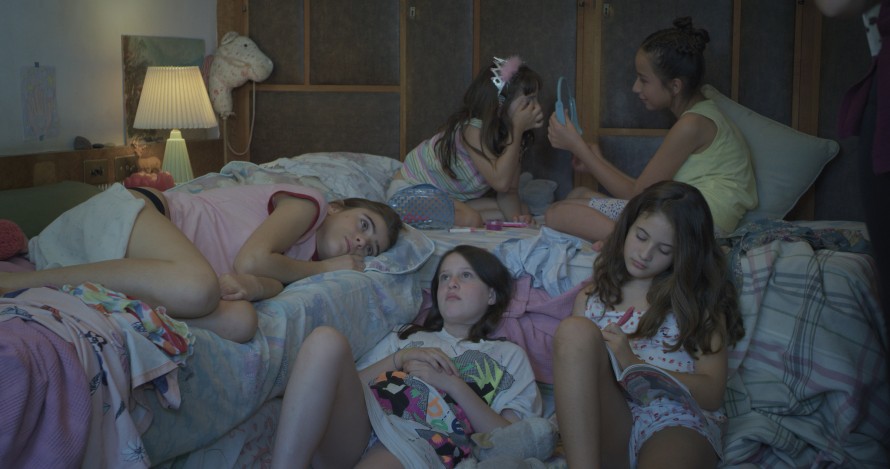
Chloé Cherchyk, Matilde Creimer Chiabrando, Siumara Castillo, Agustina Milstein and Camila Zolezzi in Mamá, mamá, mamá by Sol Berruezo Pichon-Rivière
This year, you've achieved a share of female directors amounting to 58%! Is that easily shaken out of your sleeve? Or is it hard work?
I am a feminist, and it is therefore not particularly difficult for me to select films made by women. In the screening process, I sometimes don't actually know exactly whether a film was made by a woman or a man, or anyone in-between. While I recognize that there is something tantamount to the “female gaze”, I personally do not have to consciously strive for gender justice or to programme a certain quota. I do think the "50/50 by 2020" goals towards parity in the film-industry are very good and an important tool for initiating necessary changes. What does it mean if more women in this world have access to a camera or are given funds to make a film? Especially in regions where women are completely under-represented in the film industry – which, frankly speaking, is almost everywhere. When films made by and with women become more present, what could that mean for our perception of the world?
So, this year's Generation programme is rich in female perspectives. The crew on the set of the debut film Mamá, mamá, mamá (Mum, Mum, Mum), by the Argentinean filmmaker Sol Berruerzon Pichon-Rivière, consisted exclusively of women. So did the cast of this sensitive, intimate drama, which addresses the themes of loss and grief. The female presence across the whole production is an unequivocally clear statement here. In Irmã (Sisters in the End of the World), the Brazilian director duo Luciana Mazeto and Vinicius Lopes, everything is bathed in a pink light that emanates from the arrival of an asteroid. Yet, before it gets that far, the two protagonists turn patriarchal world views upside down by virtue of pointedly written dialogues and stunning imagery.
As you see it, what will be remembered of this year's programme?
This is no time for ordinary cinema. Inevitably, the programme reflects the sheer urgency of the challenges, which confront us all, and the omnipresent states of emergency of the world we currently live in. And it is young people who are protesting everywhere. No matter where you look, you find them there on the frontline. They bring an incredible amount of energy, they make a difference, they say what must be said. You can see that in so many Generation films, but especially and very topically in the short film Comrades by Kanas Liu, straight from the streets of Hong Kong.
And, Rubika Shah's White Riot describes the anti-fascist struggle of the Rock against Racism movement in Great Britain in the 1970s. Moreover, it builds unmistakable bridges to current social challenges in the fight against racism and discrimination.
The brothers in Samuel Kishi Leopo's Los lobos hold on to their dreams tightly, even turning them into their strength, while they struggle to make a fresh start after emigrating from Mexico to the United States. Taking giant leaps and small steps, the heroines and heroes of the films battle against the prevailing conditions. And behind all these stories, there is always the important question that should resonate beyond the cinemas: Whose future is it?